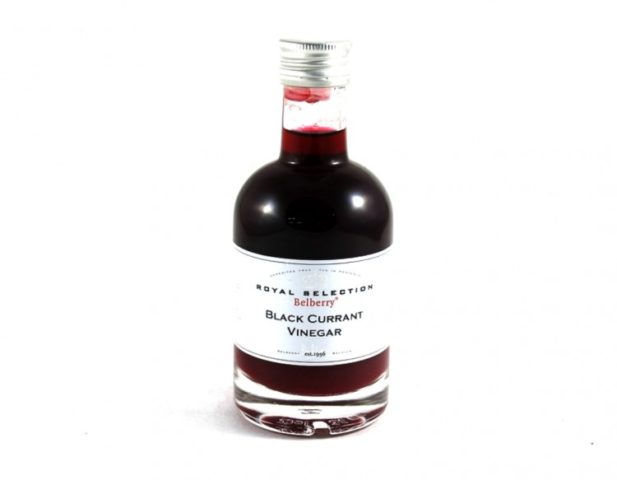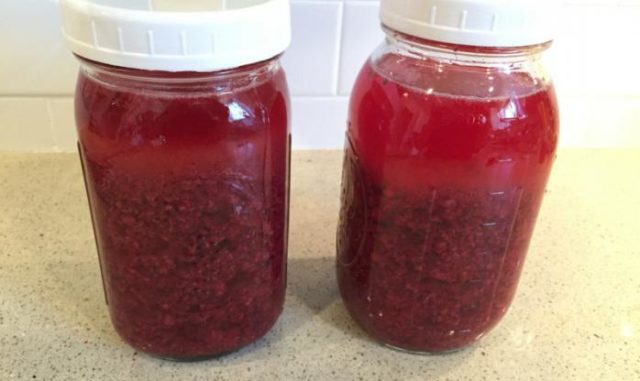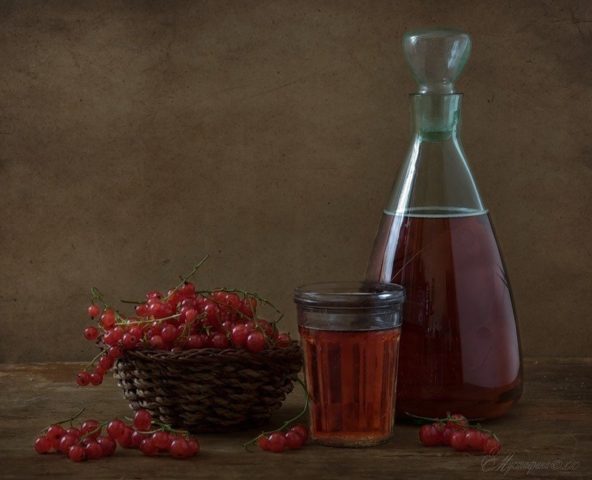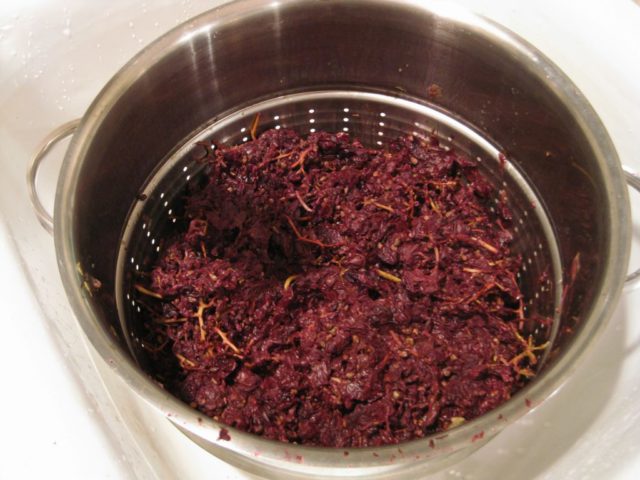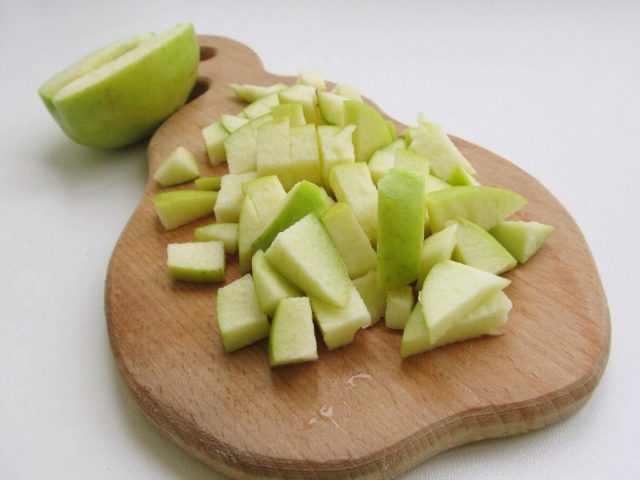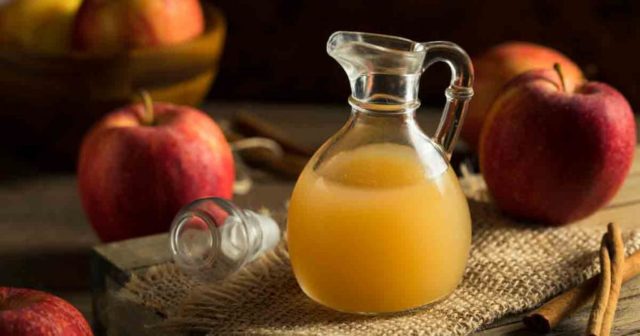Content
Homemade currant vinegar is a healthy product that has been recognized by good housewives. Even the most ordinary dish in the form of familiar dumplings or cutlets will be appreciated by the guests, if you add a couple of drops of homemade vinegar.
The benefits and harms of currant vinegar
Both berries and currant leaves contain a lot of vitamins and minerals, enzymes and natural antioxidants. Vinegar made from currants at home is more useful than ordinary synthetic vinegar, since it retains all the beneficial properties of berries and leaves.
Benefit:
- strengthens the body and immunity;
- removes urea;
- strengthens the gums;
- helps fight viral and respiratory infections;
- prevents oncology and facilitates oncological rehabilitation;
- stimulates digestion;
- stimulates the appetite.
Harm:
- increased secretion of the stomach;
- irritation of the gastric mucosa with ulcers and gastritis;
- allergic predisposition;
- liver pathology;
- thrombophlebitis;
- pregnancy and breastfeeding - with caution.
Homemade currant vinegar recipes
There is an opinion that vinegar is prepared only from black currant berries. However, it is not. There are a huge number of homemade recipes for currants of any varieties, as well as currant leaves and twigs. If desired, currants are also supplemented with other sour berries and fruits.
Blackcurrant vinegar recipe
The classic homemade vinegar recipe is made from black currant berries. Incredible aroma, beautiful shade and pleasant pronounced taste made this recipe the most popular.
For cooking you will need:
- young twigs -500 gr;
- granulated sugar - 1.5 cups;
- black currant berries - 1 glass;
- water passed through the filter - 2.5 liters;
- raisins - a few berries.
Cooking method:
- Shoots should be crushed, poured into a three-liter jar, filling it by a third. Send berries and raisins there, add sugar and water. Shake everything well several times to dissolve the sugar.
- The neck is covered with gauze in two or three layers and tied. The container is placed in a dark place and kept for a month. The pulp is stirred daily.
- After the specified period, the liquid is filtered through cheesecloth, poured back and put in the same way for another two months.
- Finally, after two months, the surface is cleaned of the accumulated mass, and the contents are filtered. The clean finished product is poured into small bottles, placed in the refrigerator and used for food.
Blackcurrant vinegar perfectly complements vegetable summer salads, goes well with meats and sauces, goulash and hot dishes.
Sometimes mold forms during fermentation. This can happen if the proportions of products were distorted or sanitary and hygienic requirements were violated (poorly washed berries, dirty dishes, unboiled water). Small amounts of mold can be removed, but the taste and quality of the product, of course, will not be the same.
If the mold has covered a large area of the container, then you will have to throw out all the contents.
Red currant vinegar recipe
Red currant vinegar has a pleasant sweet and sour taste, beautiful red color and many useful properties. Instead of red currant, you can take white, or mix the two together. The rest of the recipe does not change, the proportions are the same.
For cooking you will need:
- red currant berries without twigs -500 gr;
- sugar - 2 large glasses;
- purified water - 2 liters.
Cooking method:
- The basis for making red currant vinegar is syrup. You need to pour sugar with two liters of water and boil. Cool, then start preparing the vinegar.
- The currants are kneaded with a wooden crush, placed in a large jar and poured with the resulting syrup.
- Cover the neck with a gauze napkin and tie. They put in the dark, and the pulp is stirred daily for two months.
- All are filtered, drained and sealed. After that, the product is ready.
Vinegar from berries and currant leaves
For cooking you will need:
- fresh black currant leaves - 500 gr;
- boiled water - 1 liter;
- sugar - 1 glass;
- black currant berries - 1 glass.
Cooking method:
- Fresh leaves are washed, placed in a three-liter jar for half the volume and poured with a cooled liter of boiled water.
- Add a glass of sugar, pure black currant berries.
- The container is tied on top with a cloth and placed in the cabinet for fermentation. They stir everything periodically, and after two months they take it out.
- The leaves and pulp are removed, the liquid is filtered through cheesecloth or a fine colander.
- Vinegar is bottled and refrigerated.
Currant and cherry leaf vinegar
Redcurrant vinegar with cherry leaf turns out to be much more aromatic. It is irreplaceable in the preparation of marinades, steeping meat and goulash, as well as various sauces for meat and fish dishes.
For cooking you will need:
- red currant (berries and shoots) -500 gr;
- cherry leaves - 30 pcs.;
- sugar - 2 cups;
- water - 2 liters.
Cooking method:
- Pound the washed berries with a wooden crush and release the juice.
- Fold the crushed mass into a three-liter bowl, alternating layers with washed cherry leaves.
- Dissolve sugar in chilled boiled water and pour leaves and berries.
- Stir everything, tie with a cloth and put in the closet. For the first week, stir everything daily, and then for another 50 days, just monitor the fermentation so that the liquid does not spill out. If the liquid tries to escape, the accumulated gas must be released. The fabric is opened slightly and then knotted again.
- After the expiration date, the product will stop fermenting and can be filtered. Ready vinegar is poured into small bottles and put away in the cold.
Homemade apple cider vinegar with currant leaves
Vinegar made from sour apples and black currant leaves turns out to be especially aromatic and healthy. This natural product is indispensable in the preparation of sauces for meat and tender pastries.
For cooking you will need:
- sour green apples -500 gr;
- black currant leaves - 500 gr;
- sugar –2 cups;
- clean water - 2 liters.
Cooking method:
- Rinse the apples, cut into neat cubes, removing the core and seeds. Rinse the currant leaves.
- Boil the syrup from water and sand, then cool it.
- After that, in a large jar, put the leaves mixed with apple cubes in layers, pour over everything with syrup.
- Tie the neck of the jar with a breathable cloth and secure with an elastic band.
- Remove the container in a dark place for about two months. It all depends on the type of apples: the more acidic they are, the more intense the fermentation and the faster the vinegar ripens. Every day you need to look after the liquid so that it does not run away.
- After the expiration date, strain the liquid, bottle it and put it in the refrigerator.
Terms and conditions of storage
Homemade vinegar will last in the refrigerator for about two years and then it will over-acidify. The taste and quality of the product is deteriorating, it no longer brings benefits, but harm.
If the product suddenly becomes moldy before the specified time, it is thrown away. Mold fungus poisoning is considered one of the most severe.
Conclusion
Making currant vinegar at home is not difficult at all. Spending just a couple of hours, you can get a natural, environmentally friendly and healthy product and please your loved ones and guests with new culinary masterpieces.
